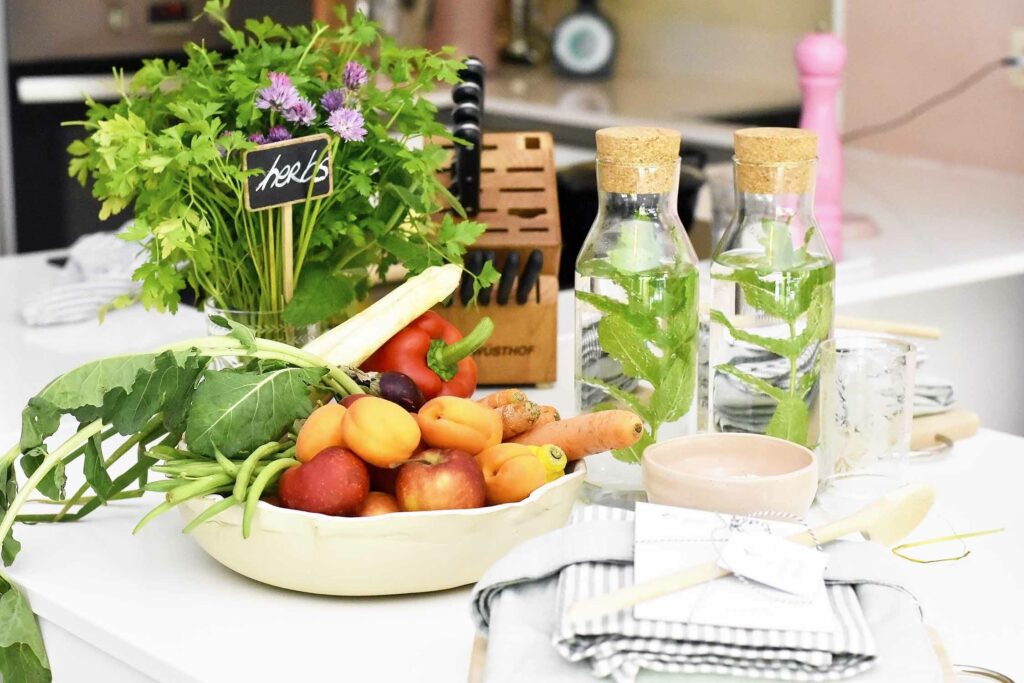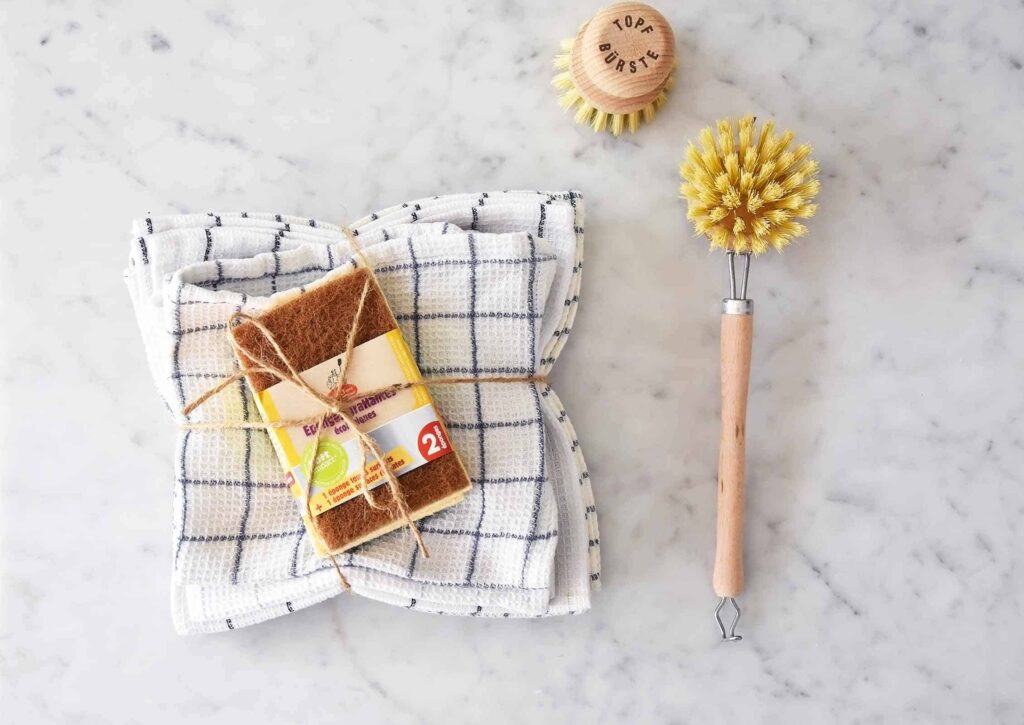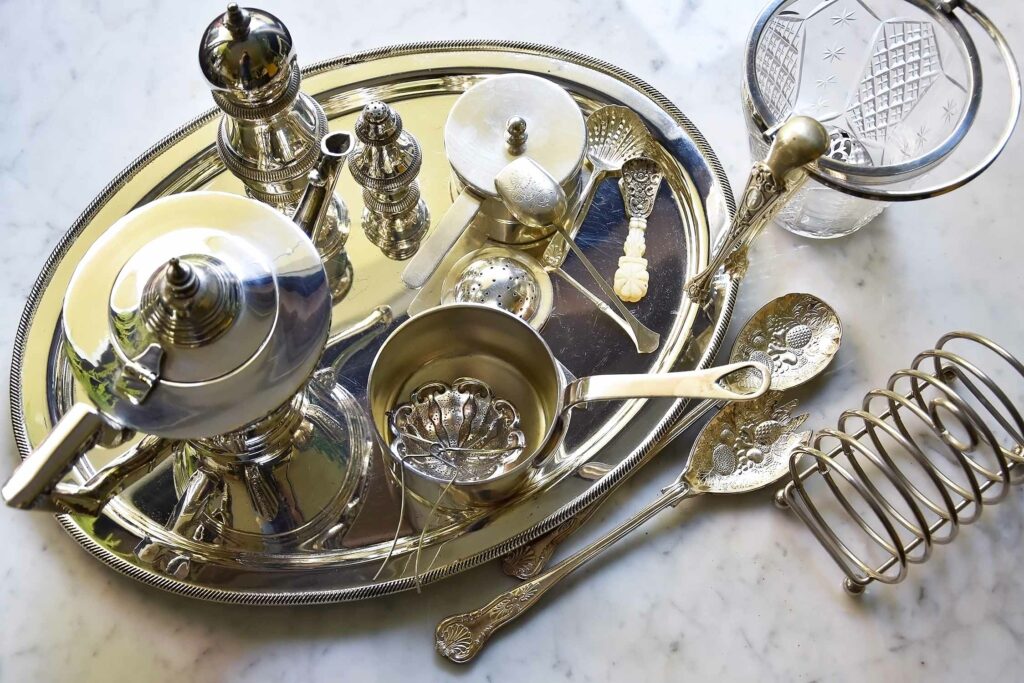If you are like me living in an urban metropolis and have limited outdoor space wether it is a windowsill, a balcony or terrace, do not fret; also you can grow outdoors herbs and vegetables, embrace a green lifestyle with these guidelines and tips.
Full disclosure: my outdoor space which I call “my garden”, measures about 7 m long and about 3 m wide. It is an ugly paved, north-east facing terrace and is partially covered by the hanging over balconies of the building. The only thing it has going for it, I have a green “borrowed landscape” as Monty would say ( Gardener’s World on BBC2): plenty of trees and shrubs beyond my little space to look out on to ( versus a brick wall or building) and actually it is really peaceful and quiet most of the time.
North East facing, tiny paved space with trees, shrubs and balconies blocking the sunlight makes growing herbs, vegetables and flowers a BIG challenge. But I make it work! Here is what I have learned:
- Sort out your SEATING. An outdoor space is foremost an extra room of your home to enjoy. I bought my little shoebox back in 2011 and started off with donated wooden chairs and plants from my mama. Then I bought a cheap wooden bistro set with 2 chairs & a folding table, a beach lounge chair and a narrow small wooden bench (all donated to my brother). I never used the bistro table , the beach chair was too big and the bench was uncomfortable. About 2 years ago I invested in a 3-seater lounge sofa with slats letting light in my home and added this week the little 2-seater bench. I adore lounging on the sofa, it is easy to move to follow the sunshine. Regardless of the small number of seating, over the years I have had several fabulous garden parties with up to 25 people packed in that tiny space, all having a blast.
- Note the SUNLIGHT HOURS and RAINFALL . Observe your garden in each season and especially in spring and summer; note when your space gets full sun and for how long. Where does the rain fall and where not. My space gets plenty of sunshine in winter through the trees from morning to about noon. In spring and summer once the trees are full of leaves and the sun is higher positioned, I get full sun in some areas from 11H to 14H. Rainfall does not water the plants enough, so all year round I ve to water the pots every few days.
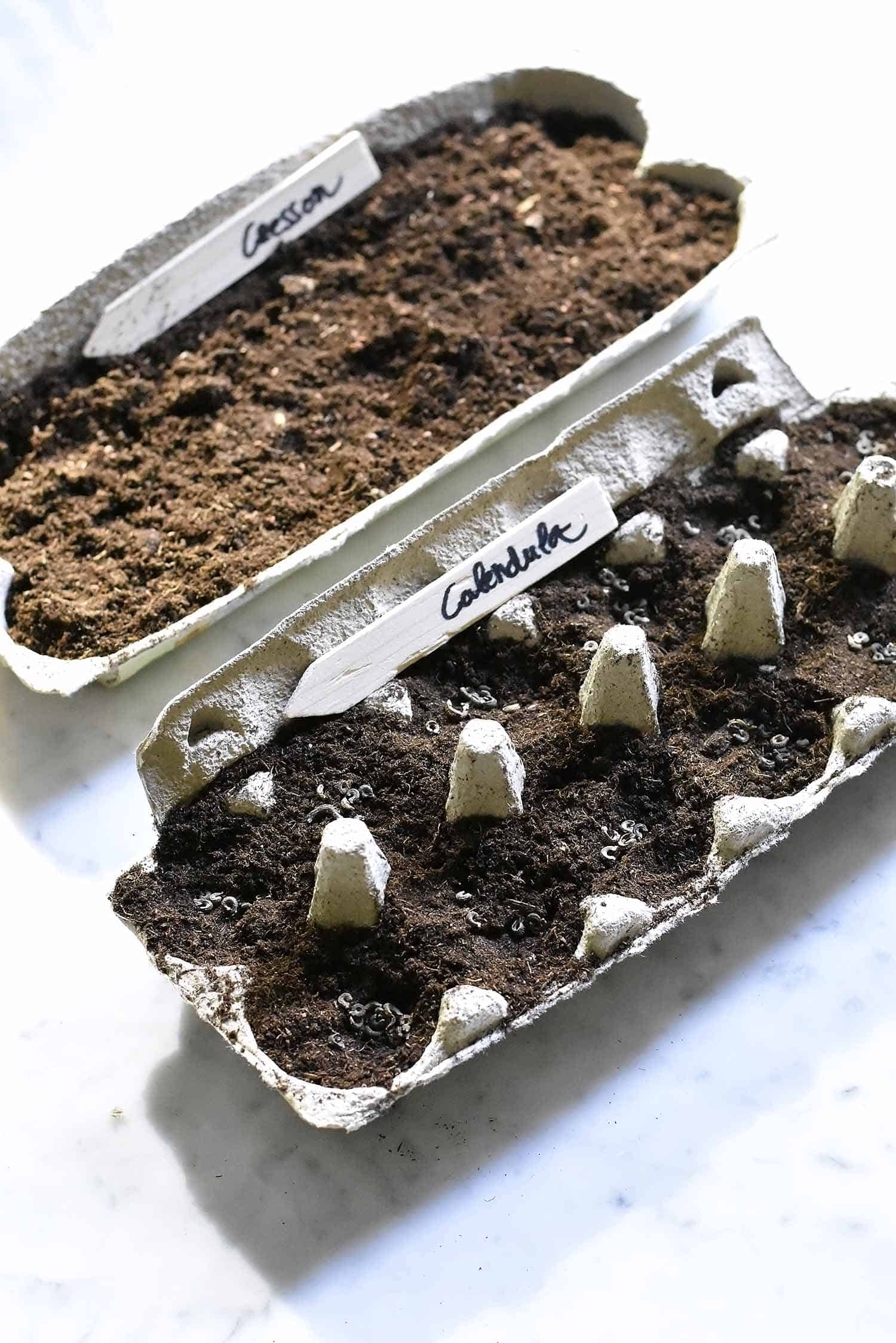
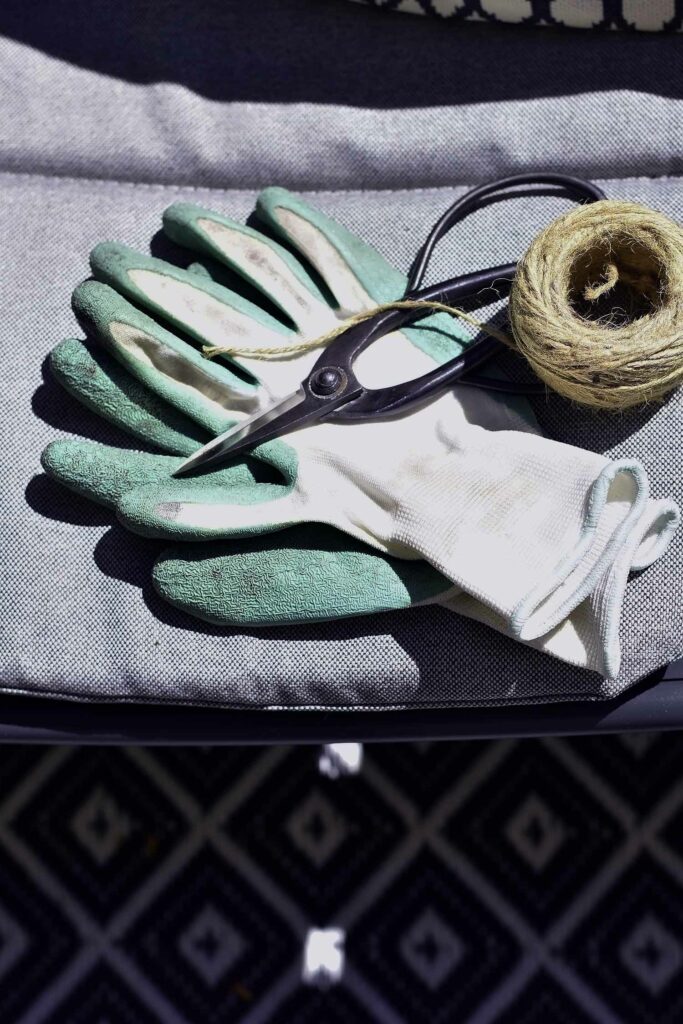
- RESEARCH plants, flowers, herbs and vegetables. Find out what type of plants will work in your space with your weather conditions. In my case partial sun and shade loving plants thrive, like hydrangeas, ferns, hellebores, and ivy. All vegetables and mediterranean herbs need full sun. I found that placing herbs near the windows and nestled in between others works pretty well. I focus each year on 1 new herb : mint, chives, baie leave, rosemary, lemon verbena, thyme (this years focus) and (next year ) sage. Edible flowers such as nasturtiums and violets do well. Vegetables need a lot of sun and I found that green beans seem to do well in my tiny space.
- Plant the SEASONS and think AHEAD. Make each season colourful and interesting. Back in October 2019 I planted about 200 bubbles in pots : tulips, daffodils and crocuses. My garden was spectacular in March and April and the bountiful colours lifted my confinement spirits daily. From May the hydrangeas, roses, fushias and palagonias come in bloom and will flower all summer. Vegetables are sown in seed trays and planted end of May, middle of June in a container once the daffodil and tulip foliage has died back.
- Go for COLOUR. Select a 3 colour palate to achieve a cohesive and sophisticated look. Go for a rainbow of colours and foliages to get that cottage garden feel. Even though I know that dahlias and daisies need a lot of sun, regardless I get some every year anyway to add extra colour. My floral colour palate is pink, purple and yellow. There is a lot of green foliage so in the fall I will look for some darker leaved mini shrubs, I dream of a lovely red leaved maple mini- tree. Plant a pottage garden, which is a French technique to plant vegetables with flowers. Like kale in between the roses.
- GROW from SEED and take CUTTINGS. April and May are the best months in Belgium to sow seeds either in a seed tray or repurposed materials such as toiletpaper rolls, egg cartons or empty plastic yogurt pots. Some seeds can go directly in the ground like carrots, leeks and beets. Sow in trays as early as end March and have them inside on a windowsill with lots of light but not direct sunlight as that might scorch the little sprouts. From the middle of May, plant out the veg in your windowsill box, container or border. Water regularly. Take cuttings and make new plants.
- COMPOST kitchen scraps and ORGANICALLY FEED your containers. Even in my small space I put a compost bin where all my veg and fruit kitchen scraps go. It’s a learning process but it is looking and smelling good. I ve created beautiful compost soil to mulch my plants. I am considering getting a wormfarm digesting veg and fruit scraps with great speed and get the beneficial juices to feed the plants. If none of this is an option for you then feed your plants, veg and fruit containers as directed on the packet with store-bought organic tomato feed.
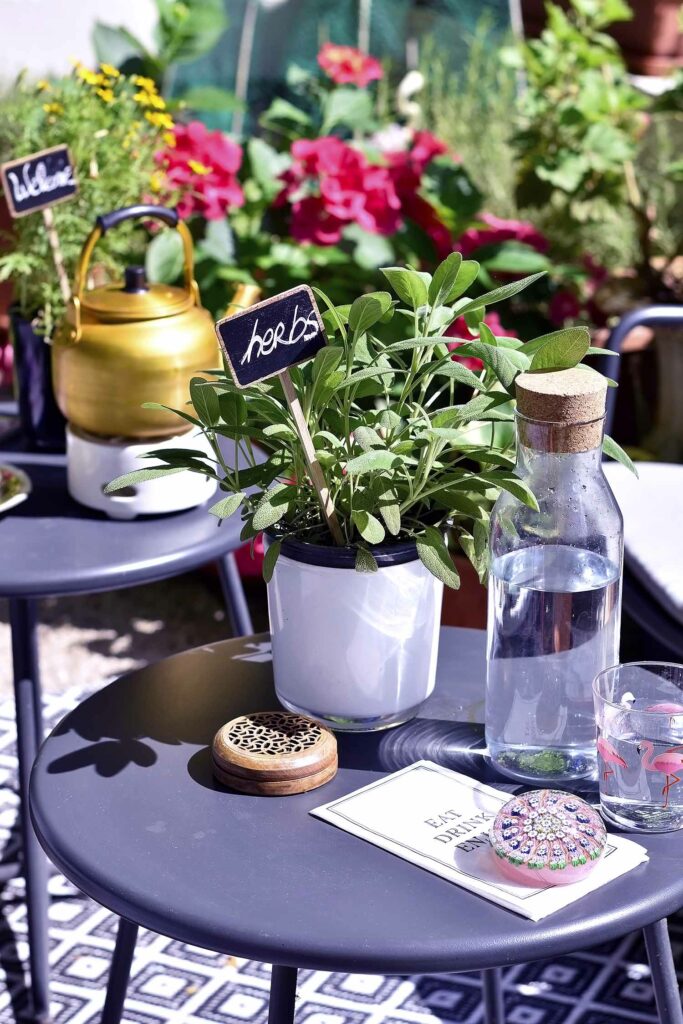
resources that might help you:
- check out Carol Kleins Instagram the_carol_klein for GREAT tutorials on taking cuttings and sowing seeds.
- I found the book “Grow fruit & vegetables in pots” published by PHAIDON, with advice from Great Dixter farm, really helpful.
- Watching BBC2 Gardener’s World with Monty Don weekly has taught me soo much.
- The British RHS website is a great resources for questions and finding nurseries.
- Bruxelles Environment ( Leefmilieu Brussel) have great resources on their sites ( in French and Dutch)
….and I ask my mama and my friend Flavio for advice all the time.
Written and photographed by Sandra Slawinski without commercial deals.


